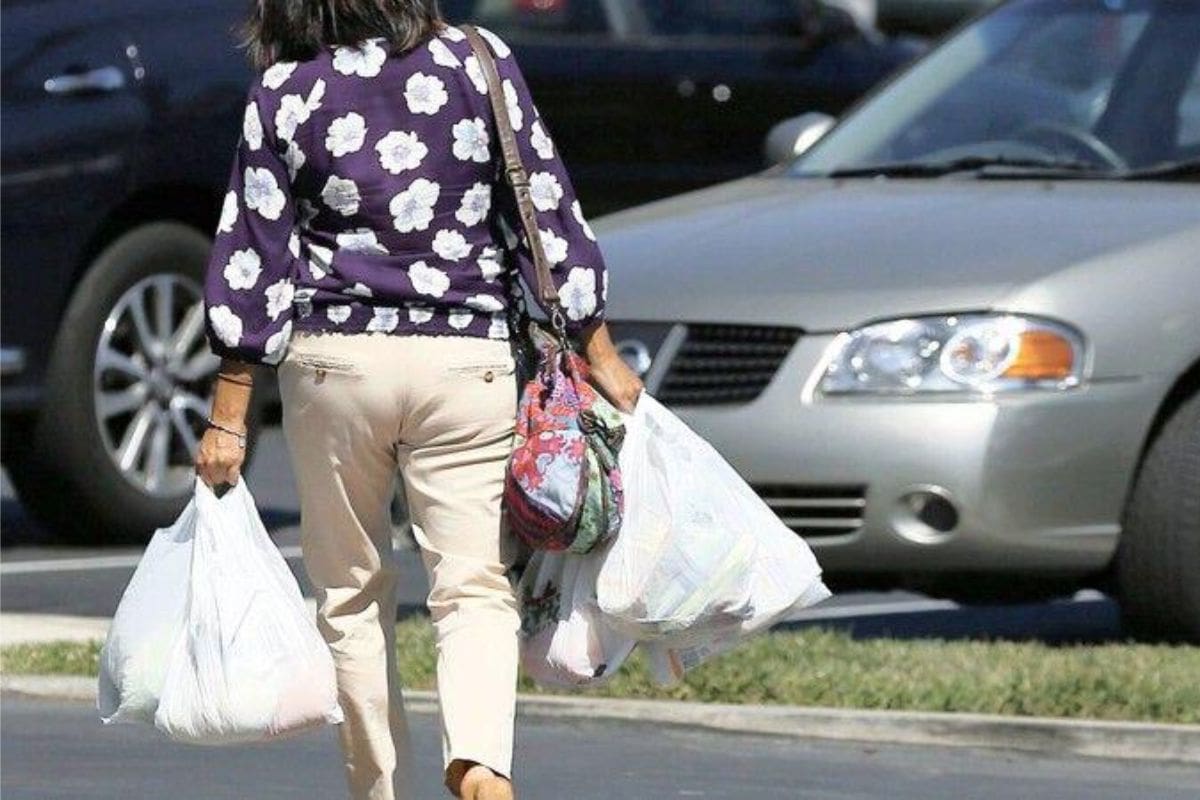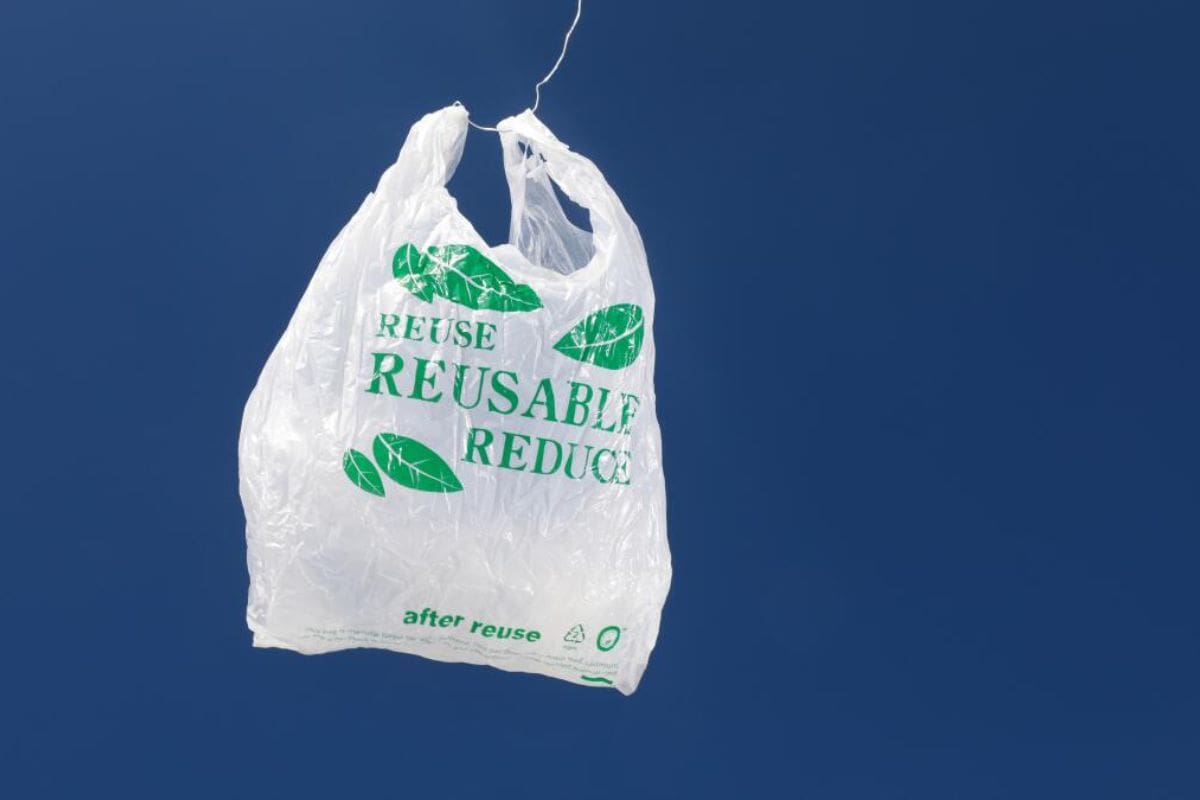California Plan to Eliminate Plastic: the bustling aisles of a grocery store, filled to the brim with shoppers clutching their carts like lifelines. Among the sea of products, one ubiquitous item stands out: the plastic grocery bag. However, California has set its sights on a different scene, one where these bags no longer clutter landfills and choke marine life. In a bold move to tackle plastic pollution head-on, the Golden State has devised a comprehensive plan to eliminate plastic grocery bags. But what does this mean for consumers, businesses, and the environment? Step into the realm of California’s bag ban and discover the ripple effects of this groundbreaking legislation.
Key Takeaways
- California’s plastic bag ban aims to eliminate all plastic shopping bags statewide by 2026, extending existing bans on thin plastic bags and promoting the use of reusable bags.
- The ban has resulted in a noticeable decrease in plastic bags littering streets and waterways, preventing millions of bags from being used and discarded each year.
- By reducing plastic waste ending up in landfills and the environment, the ban encourages a shift towards reusable alternatives and promotes sustainable consumer behavior.
- California’s bag ban is part of a nationwide effort against plastic pollution, with 12 states implementing statewide bans and hundreds of cities across 28 states initiating their own bans.
California’s Plastic Bag Ban Proposal
California’s Plastic Bag Ban Proposal aims to eliminate all plastic shopping bags statewide by 2026, taking a significant step towards reducing plastic waste and promoting sustainability. This proposal comes as an extension to existing bans on thin plastic bags, which currently allow for the purchase of thicker plastic bags at checkout. By completely banning plastic shopping bags, California hopes to encourage the use of reusable bags and reduce the environmental impact of single-use plastics.
This ban would not only help to reduce litter and waste but also protect wildlife and marine ecosystems from the harmful effects of plastic pollution. In addition, it would promote a shift towards more sustainable alternatives, such as paper bags or reusable cloth bags, which have a lower environmental footprint. By implementing this ban, California aims to lead the way in creating a cleaner and more sustainable future for all.
Concerns Over Plastic Bag Usage
Now let’s shift our focus to the concerns surrounding the usage of plastic bags, specifically addressing the inefficiency of thicker plastic bags and the alarming increase in plastic bag waste.
- Thicker plastic bags are often touted as a more durable alternative to thin plastic bags. However, Democratic state Sen. Catherine Blakespear raises concerns about their inefficiency. These bags require more resources to produce and take longer to decompose, exacerbating the environmental impact.
- Despite the 2014 ban on thin plastic bags in California, the overall use of plastic bags has surged. A state study reveals that plastic bag waste has increased from 2004 to 2021. This surge in usage contributes to the already pressing environmental challenges posed by plastic pollution.
These concerns highlight the need for a comprehensive solution to address the negative consequences of plastic bag usage.
Nationwide Efforts Against Plastic Pollution
Efforts to combat plastic pollution are gaining momentum across the nation, with numerous states and cities taking action to reduce the use of plastic bags. Currently, 12 states have implemented some form of statewide plastic bag bans, aligning with the nationwide movement. Additionally, hundreds of cities across 28 states have initiated their own plastic bag bans to address environmental concerns.
This widespread effort reflects a growing recognition of the detrimental impact plastic bags have on our ecosystems. By reducing plastic bag usage, these states and cities are taking an important step towards protecting our environment and promoting sustainability. The table below highlights some of the states that have implemented statewide plastic bag bans, as well as the number of cities within those states that have also taken action.
| State | Number of Cities with Plastic Bag Bans |
|---|---|
| California | 145 |
| New York | 27 |
| Hawaii | 4 |
| Vermont | 1 |
As more states and cities join this movement, the collective effort to combat plastic pollution continues to grow stronger.
Impact of California’s Bag Ban
The statewide ban on plastic bags in California has had a significant impact on reducing plastic pollution and promoting environmental sustainability. Since the ban went into effect, there has been a noticeable decrease in the number of plastic bags littering the streets and polluting waterways. Here are some key points to consider about the impact of California’s bag ban:
- Reduction in plastic waste:
- The ban has prevented millions of plastic bags from being used and discarded each year.
- This has resulted in less plastic waste ending up in landfills and the environment.
- Shift towards reusable alternatives:
- The ban has encouraged a shift towards reusable bags, such as cloth or canvas bags.
- This has helped to reduce the demand for single-use plastic bags and promote sustainable consumer behavior.

Also Read: Chipotle Warns of Price Hike for California Burrito Customers
Legislative Decision and Historical Context
After witnessing the positive impact of California’s bag ban on reducing plastic waste, it is important to explore the legislative decision and historical context that led to this pivotal environmental initiative. The fate of the bill rests on the decision of Democratic Gov. Gavin Newsom, who has previously endorsed environmental initiatives. Newsom’s history of supporting sustainability measures, including San Francisco’s pioneering plastic bag ban in 2007, underscores the potential significance of the legislative outcome in California’s ongoing efforts to mitigate plastic waste.
Legislative Decision and Historical Context
| Historical Context | Legislative Decision |
|---|---|
| San Francisco implemented a plastic bag ban in 2007, becoming the first city in the U.S. to do so. | California passed its statewide plastic bag ban in 2014, which was subsequently signed into law by Gov. Jerry Brown. |
| The ban in San Francisco led to a significant reduction in plastic bag usage and an increase in the use of reusable bags. | The statewide ban aimed to reduce plastic pollution, protect marine life, and encourage a shift towards more sustainable alternatives. |
| The success of San Francisco’s ban served as a model for other cities and states considering similar legislation. | The legislative decision in California was supported by environmental organizations and advocates, who highlighted the harmful effects of plastic bags on the environment and wildlife. |
| The ban also prompted the development of innovative solutions, such as biodegradable and compostable bags. | The legislation included a period of adjustment for businesses and consumers to transition to reusable bags and provided exemptions for certain types of bags, such as those used for meat and produce. |
The legislative decision to implement a statewide plastic bag ban in California was influenced by the historical context of San Francisco’s successful bag ban and the growing awareness of the environmental impact of plastic bags. The decision aimed to reduce plastic pollution, protect marine life, and promote the use of reusable bags. It received support from environmental organizations and advocates who emphasized the harmful effects of plastic bags on the environment and wildlife.
Conclusion Of California Plan to Eliminate Plastic
California’s plan to eliminate plastic grocery bags is a significant step towards reducing plastic pollution and protecting our environment. With nationwide efforts gaining momentum, it’s clear that the issue of plastic waste is being taken seriously. The ban on plastic bags in California will have a positive impact on the state’s ecosystems and set an example for other regions to follow. It’s time to say goodbye to plastic bags and hello to a greener future!
Our Reader’s Queries
Will California ban plastic bags?
Under California’s SB 270, a ban on single-use carryout bags is in effect. As a result, customers are no longer provided with single-use plastic carryout bags at most grocery stores.
Are plastic grocery bags recyclable in California?
Most large supermarkets and pharmacies in California are mandated by state law to establish recycling bins. These bins are designed to facilitate the return of various plastic items, including shopping bags, dry-cleaning bags, bread bags, paper towel wraps, bathroom tissue wraps, napkin packaging, diapers, and even the plastic bag used for newspaper delivery.
How much are plastic grocery bags in California?
As per this regulation, stores are required to impose a minimum charge of 10 cents for each bag—whether paper or plastic—dispensed at the checkout. Additionally, 149 other cities in California have enacted their own local bag laws.
What is California doing about plastic?
California has taken a prominent role in combatting ocean litter by implementing a ban on single-use plastic bags, prohibiting microplastics in rinse-off items such as face scrubs and toothpaste, and adopting some of the most extensive plastic extended producer responsibility mandates nationwide.

